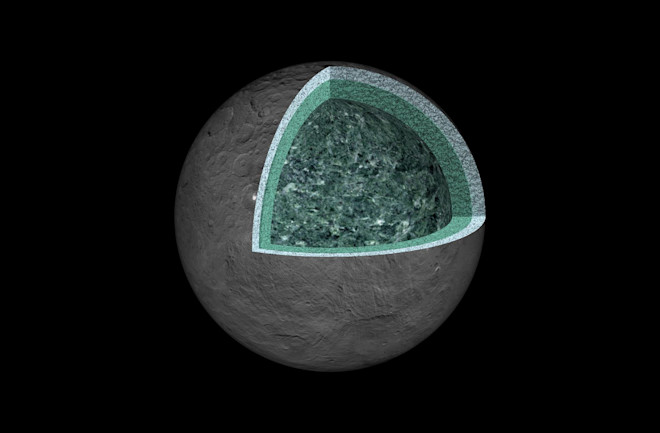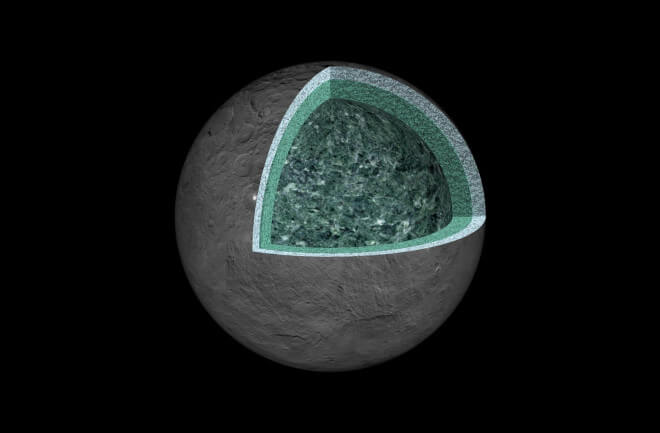Watery worlds like Ceres — a dwarf planet in the asteroid belt — hint that our solar system is wetter than we thought. And where there’s water, there might be life.

Ceres boasts more water than any world in the inner solar system other than Earth. That was a major reason why NASA sent the Dawn probe to Ceres, where it entered orbit in 2015. But many expected that even if it once had an ocean, any liquid would now be frozen into its thick and icy crust.
Yet, as Dawn approached, the spacecraft’s cameras revealed a number of strange white spots, most prominently inside the 57-mile-wide Occator Crater. That find proved key to explaining Ceres’ history.
In a series of seven papers published in Nature last August, NASA scientists say the best evidence suggests that a space rock struck that world’s surface some 20 million years ago, where it punched a hole into its ice-rich crust. The impact tapped into a deeper reservoir of salty water. As a result, icy chemicals have erupted through fractures in the ice from a subsurface pocket of ocean that resembles Utah’s Great Salt Lake.
Meanwhile, a new analysis of data from NASA’s New Horizons mission to Pluto, combined with fresh modeling of the world’s formation, suggests that the dwarf planet developed early on in our solar system’s history, with a liquid ocean. But how could such a small world keep a liquid ocean from freezing?
Previously, astronomers had suspected Pluto formed from cold bits of rock and ice that slowly clumped together and heated until they melted the water, which eventually refroze over billions of years. But a new study, published in June in Nature Geo Science, takes a different approach.
The team behind the study says they found no evidence of compression features on Pluto’s surface, such as cracks, which would indicate a cold start. Instead, the dwarf planet’s surface features make more sense if it was shaped hot and fast, forming in less than 30,000 years from an onslaught of impacts. Those impacts would leave Pluto hot, with a liquid ocean still warmed by radioactivity today. It’s not just Pluto, either. There are several other potential dwarf planets in the outer solar system that should have formed the same way.
Beyond changing astronomers’ minds, the findings could help build momentum for follow-up missions to these previously overlooked small worlds. Stern and members of the New Horizons team are now trying to sell NASA on a Pluto orbiter mission. And, on the same day the Dawn team presented its latest results, scientists submitted a NASA-funded study looking at the feasibility of sending a $1 billion spacecraft to land on Ceres and search for signs of water, or even life. “Ceres is a lot closer and it’s a lot easier to get to than these moons in the outer solar system,” says Carol Raymond, principal investigator of NASA’s Dawn mission. “It is a very enticing target.”
We are the change the world has been waiting for!
Have you witnessed an unidentified flying object?
Whether you think UFOs are black projects, extraterrestrial craft, something else altogether, or just don’t know.
Unconditional love. The road we all get to walk. Unconditional love is like the sun.
WE ARE THE DISCLOSURE ~ WE HAVE NEVER BEEN ALONE
Love and Regards,
Thank You,
Nancy Thames
Sources: Eric Betz
Discover


